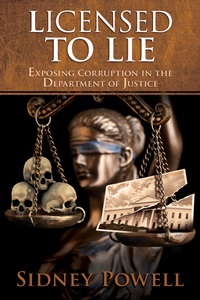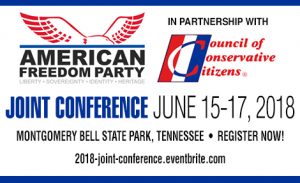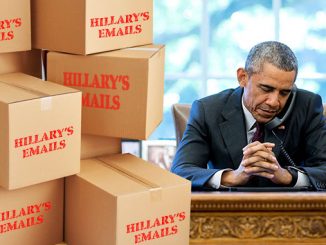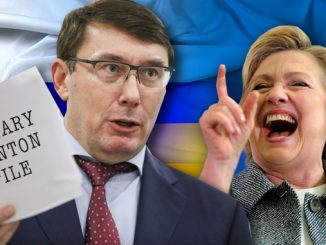
On this 25th anniversary of the massacre at the Branch Davidian Church near Waco, Texas, AFP concludes its series of articles looking back on that terrible time when U.S. military and law enforcement waged war against a peaceful group of American citizens. This is part four of that four-part series. Parts one to three follow, in full, as published in previous issues of American Free Press.
Janet Reno Responsible for Waco Massacre
Part 4 of 4: The deadly fire at Waco was started by strategies approved by Janet Reno’s Justice Department.
By S. T. Patrick
The plan for the raid on what the mainstream media strategically called a “compound” worked its way up the chain of command to Attorney General Janet Reno on April 12, 1993. It was a two-step plan that the FBI and Bureau of Alcohol, Tobacco, and Firearms (BATF) hoped would end at step one—injecting tear gas into two areas of Mount Carmel, the Branch Davidian home and church complex outside of Waco, Texas. They had hoped that this would drive the men, women, and children out and the engagement would be short-lived. Part two of the plan to lay siege to Mount Carmel involved tearing down the outer walls in an effort to expose those inside.
Reno was not alone in her decisions. She was often consulted not only by the commanders in the field, but also by FBI Director William Sessions and Assistant Attorney General Webster Hubbell, a Clinton administration appointee tied to the same Arkansas scandals that would trail the president and first lady throughout their tenure in D.C.
Reno suggested a scheme that would involve waiting until the water supply to the home was so depleted that the inhabitants would be thirsted out of Mount Carmel and into the hands of government officials. A later Justice Department report stated that the FBI convinced Reno that “(Branch Davidian leader David) Koresh was rationing water to ensure discipline.” Reno quickly abandoned the water strategy and instead asked the FBI for a written report on entrance options.
The FBI’s report was received by the attorney general on April 17. She quickly gave her approval to an assault plan that would begin on April 19. What was to be a 48-hour plan lasted approximately five minutes.

“It was not law enforcement’s intent that this was to be D-Day,” a later Justice Department report claimed.
At 6:02 a.m., M6OA1 tanks, modified for demolition, began tearing through the walls of Mount Carmel. The tanks then began firing CS gas into the building. Shortly thereafter, in protection of their home, the residents of Mt. Carmel fired shots at the armored CEVs (combat engineering vehicles). The operations plan, approved by Reno,called for an escalation of government action if the tanks were fired upon. The order of the shots and the identities of the shooters would remain a controversy within the Waco research community.
Regardless of the order of shots, return fire on the part of the Davidians was a certainty. Unlike many Americans, there are those who believe in the literal protection of property rights and the right to exist as a community. When they are threatened and fired upon by others—in an official governmental capacity or not—they will fire back. Self-defense laws protect individuals from other individual intrusions, but it is assumed that individuals are simply supposed to acquiesce when the intruder is a government entity over-aggressively and mortally enforcing its will. The Branch Davidians outside of Waco believed differently.
The Justice Department report detailed Reno’s reactions as those of a surprised attorney general and not as the country’s leading law enforcement official who had pre-planned for all likely outcomes. In defending Reno, allowing her a human reaction to the commanders’ militaristic actions, the report also made the attorney general look incompetent.
Reno “did not read the prepared statement carefully,” the report said. “Nor did she read the supporting documentation. She read only a chronology.” If that is true, then Reno approved fatal violence against American citizens after reading an outline in lieu of carefully studying the actual plans.
Around 11:40 a.m., after a vapor had formed from the over 400 ferret rounds fired into the home, the building caught fire. Within a half hour, Mount Carmel was destroyed and those inside had died.
Reno, President Bill Clinton, and FBI spokesmen all immediately began claiming that the Branch Davidians had started the fire. The BATF and the FBI made sure that no evidence could be investigated, just as Branch Davidian spokesman Steve Schneider said they would on March 10, over a month before the blaze.
“If anybody wanted to come here and burn the place down, kill all the people, what evidence would be left?” Schneider had asked, a month earlier.
Over the next month, Schneider made multiple statements predicting that government agents would, indeed, burn Mount Carmel to the ground in an effort to destroy evidence.
Schneider was correct in his predictions, despite a FBI negotiator once telling him, “No, we’re not going to do something like that.”

In a statement as callous as Hillary Clinton’s later comment regarding Muammar Qaddafi (“We came, we saw, he died.”), President Clinton summed up the entire horrific tragedy at Waco in one line: “Some religious fanatics murdered themselves.”
On a February 2001 episode of “Larry King Live,” former White House aide Linda Tripp alleged that it was the first lady who had pressured the late Vince Foster, Mrs. Clinton’s partner at Rose Law Firm and Deputy White House Counsel for the Clinton administration, to find a solution to the Waco standoff.
According to author Robert Morrow, “Foster, at Mrs. Clinton’s direction, transmitted the order to move on the Branch Davidians’ Waco compound, which culminated in a military style attack on the wooden building.”
Mike McNulty, producer of the documentary “Waco: Rules of Engagement,” also believed Mrs. Clinton gave the orders from the White House. In 1993, and throughout the Clinton administration, Mrs. Clinton did not have an appointed or elected role in the administration. She had neither been elected, nor had she ever been confirmed by the Senate. She assumed power by proxy, the definition of a shadow government.
Regardless of who gave the orders at the White House level, Reno is on record as having approved the tactics used against the Branch Davidians. She also approved the prosecution of Timothy McVeigh and Terry Nichols as the only Oklahoma City conspirators, despite evidence that others, including a Middle Eastern man seen with McVeigh, were involved. In 2000, it was Reno who ordered Elian Gonzalez returned to his father’s custody in Cuba. Whether or not she made warm speeches for progressive groups before her 2016 death, she is still responsible for the 80-plus lives lost at Mount Carmel, 21 of which were children. For Reno, the first woman to serve as attorney general, this is her legacy. This is her truth.
Published in American Free Press Issue 17 & 18, April 23 & 30, 2018.
The Waco Massacre
Part 1 of 4: On the eve of the 25th anniversary of the massacre at the Branch Davidian Church near Waco, Texas, AFP begins a series of articles by S. T. Patrick to look back on that terrible time when U.S. military and law enforcement waged war against a group of American citizens. This is part one of a four-part series.
By S. T. Patrick
Twenty-five years ago, on April 19, 1993, America witnessed one of the most indelible moments of the Clinton presidency as it unfolded on cable news. In a field outside of the small community of Axtell, Texas—13 miles from Waco—a tank, on orders from the U.S. government, powered its way through the front door of Mount Carmel, a home to nearly 100 Branch Davidians. Mount Carmel was quickly ablaze in a gaseous inferno that would take the lives of approximately 80 Davidians, including almost 20 children.
Many questions lie in the smoldering ashes of Mount Carmel. The government spokesmen and national media owned the narrative immediately following the Bureau of Alcohol, Tobacco, and Firearms (ATF) siege at Mount Carmel. Made-for-television films such as “In the Line of Duty: Ambush at Waco,” which presented the government’s view of the earlier Feb. 28 conflict with the Davidians, had been made even before the April siege.
In the years following the fire, the political right lifted its own public-relations torch regarding what is now simply known as “Waco.” Militias, Second Amendment activists, and libertarians have all pushed their own causes and anger through the hazy lens of Mount Carmel.
Dick J. Reavis, a former senior editor of Texas Monthlyand reporter for the Dallas Observer, wanted to take the story beyond the conflicts of current events. In 1995 Reavis released The Ashes of Waco: An Investigation, which studied the origins of the Branch Davidians and the trek that found them in McLennan County, Texas, just 90 minutes from Dallas.
In an interview with this writer, Reavis pointed out that the media never discussed the demographics of the Davidian community outside of Waco. They preferred, instead, to paint the Davidians as right-wing gun nuts and religious zealots. To the mainstream media, the labels are synonymous with white racism. Reavis describes a multi-cultural community that is much different.
“There were about 120 people, perhaps 130, living in Mount Carmel at that time,” Reavis said.
“The press never pointed this out—or skipped over it—but those people were of all races on the face of the Earth. About 20% of them were mainly West Indians, but black. . . . In other words, you had an integrated community. There were Asians and there were some Mexican-Americans. The rest were white. There were several nationalities—Brits, Australians, all the West Indies.”
 Most of the Branch Davidians had been born into and raised in the Seventh-Day Adventist Church, domestically and internationally. Those living in Waco in 1993 had located there out of a belief that David Koresh was a successor to Ellen White, the founder of the church. They believed that Koresh was next in a line of leaders who could decode prophecies.
Most of the Branch Davidians had been born into and raised in the Seventh-Day Adventist Church, domestically and internationally. Those living in Waco in 1993 had located there out of a belief that David Koresh was a successor to Ellen White, the founder of the church. They believed that Koresh was next in a line of leaders who could decode prophecies.
The pilgrimage to the McLennan County countryside dates back to Victor Houteff and a schism within the church. Houteff founded the Branch Davidians based upon the ideology of an imminent second coming of Jesus Christ, an apocalyptic event that, it is believed, will also see the final defeat of the armies of “Babylon.” Financial instability led them to Texas rather than to Israel, their intended destination. After Houteff’s death and a failed Armageddon prediction from his widow, control of Mount Carmel—the Davidian home named after the mountain in Joshua 19:26—fell to Benjamin and Lois Roden.
An eventual struggle for leadership ensued after Mr. Roden’s death. Mrs. Roden supported Vernon Howell (who changed his name to David Koresh in 1990) in the position of prophet, because her son, George, was unfit for the position due to mental instability. In 1987, after threatening a Texas court with sexually transmitted diseases if it did not rule in his favor, George Roden was jailed for contempt of court. In 1989 he killed another Davidian with an axe. Found not guilty due to insanity, Roden spent the remainder of his life in an asylum. Koresh assumed the leadership of the Branch Davidians and control of Mount Carmel.
The Davidians at Mount Carmel saw themselves as Messianic Jews who celebrated the traditions of Judaism with the ideology of Christianity. Each generation would have a messenger sent from God that would interpret end-times prophecy. The prophet would then lead the flock via his or her interpretation of God’s word, prophecy, and a biblical analysis of current events.
According to Reavis, Koresh and the Branch Davidians had no problems with local law enforcement and even assisted the local sheriff on one drug case. When local law enforcement found out that agents from the Bureau of Alcohol, Tobacco, and Firearms were going to raid Mount Carmel, local officials asked, “Why don’t you just go talk to (Koresh)?”
Reavis is most perplexed by the way political groups have taken up the case since 1993. The Branch Davidians, he explained, were completely apolitical. They aligned with no political ideology and believed American politics were minutia when faced with the Second Coming. Koresh pragmatically believed he could profit from second-hand firearm upgrades and sales if a national gun-grab occurred, but he was not a boisterous Second Amendment advocate.
“What the remaining Davidians think of the gun rights question is, ‘Why do you bring that up?’ ” Reavis explained. “They think they were attacked for religious reasons. They do not believe—because they are ‘End Timers’—that human beings can do anything to improve our circumstances on Earth. Therefore, banning guns or allowing guns is a moot question, because it has to do with life on Earth, and they are anti-political.”
Rather than fleeing the compound when the February raid and the April siege began to threaten their lives, Reavis describes a more devout group of believers that chose to stay. In one intense moment during the fatal burning of Mount Carmel, one Davidian asked another what they would do next. “I guess we wait on the Lord,” he was told.
“They thought they were in something like Noah’s Ark,” Reavis explained. “You don’t jump off Noah’s Ark. They thought that the outside world would be destroyed and not the inside of Mount Carmel. If that was wrong, they also thought, they would go immediately to Heaven. I think there were some who stayed in because of their religious convictions. Those who did flee ran into a great theological problem. . . . (God) wanted to take those people (inside Mount Carmel) to Heaven, and I ran out on that chance.”
Originally published in American Free Press Issue 3 & 4, Jan. 15 & 22, 2018.
David Koresh: Fact vs. Myth
Part 2 of 4: Why was the U.S. government so bent on taking down Waco religious leader?
By S.T. Patrick
The central figure in the Bureau of Alcohol, Tobacco, and Firearms (BATF) and FBI attack on the Branch Davidian home and church outside of Waco, Texas, was David Koresh. Many have called him a “cult leader,” yet to other researchers, he is a victim of religious and anti-constitutional persecution.
In 1959, Koresh was born Vernon Howell to a 14-year-old mother who would later turn to prostitution. His step-father, a violent alcoholic, was a carpenter-turned-bartender. His biological father had left the family upon meeting another teenage girl. Born dyslexic, Koresh lamented that he spent years being referred to by schoolmates as “Mr. Retardo.” It has been alleged by some researchers that Koresh was gang-raped by a group of older boys when he was eight years old. The peer abuse was so intense that he dropped out of high school to become a non-union carpenter.
Koresh picked up religion through his grandparents, both Seventh-Day Adventists. While working out of Dallas, he met a girl who became pregnant. Bothered by this as fornication and against biblical principles, he felt it was his duty to marry her. She declined, had an abortion, became pregnant again, and then had the child. Conflicted by his own personal decisions, the results of which left him alone, he drifted to Mount Carmel.
In the mid-1980s, while on a Davidian excursion to Israel, Koresh claimed he was taken up into a sort of spaceship called a merkaba. While inside, the knowledge of the Bible was implanted into his mind. Those around Koresh later said they noticed an instantaneous yet incredible change during this period. He had quickly gained the ability to quote long passages of the Bible without the use of an aid or text. After what other Davidians saw as a spiritual miracle, Koresh’s legitimacy and authority within the group grew. Koresh eventually won leadership over the Branch Davidians and Mount Carmel in 1987 when the mentally unstable George Roden killed another Davidian in a gunfight.
Much ado has been made about Koresh’s affinity for underage girls. The attention paid to the issue has been so deafening that it has overtaken many of the other pertinent religious, constitutional, and legal debates surrounding the Waco story.
Mark Breau, a former Davidian, left the group and reported Koresh to law enforcement for child molestation. The district attorney’s office investigated the complaint, and although they suspected it was true, the parents of the girls refused to either confirm or complain. It was also Breau who told authorities that Koresh had firearm pieces that would convert an AR-15 to an automatic firing weapon.
Dick J. Reavis, the author of The Ashes of Waco: An Investigation, has framed the debate over Koresh’s marriages to underage girls as a religious matter rather than a legal or societal one.
“In the Book of Revelation, which is behind a lot of Koresh’s theology, there are 24 judges who stand in judgment over people,” Reavis explains. “During the End Times, the judges are all born to virgins. Koresh said that he had to father those 24 judges. So the parents who followed [Koresh] thought it was a great honor for their daughters to be picked,” legally underage or not.
Reavis, without making a moral or legal argument favoring either side of the debate, points out the constitutional controversy that exists when genuine religious convictions conflict with both American law and societal norms. The legal age for marriage in many countries is determined by religious practices, whereas in America it can range from the age of 13 (New Hampshire, with court approval) to 21 (Mississippi). Koresh believed his relationships were marriages based upon religious practices.
“What I found most interesting about Mount Carmel was not the fireworks but what it reveals about American society,” Reavis said. “We say we have freedom of religion, but prohibit sex with women under the age of 16 or 18, depending on what state you are in. You can believe what you want, but anything you practice is regulated if the government wants to regulate it. The same thing is true about guns. We claim you have the right to bear firearms, but everyone knows that is regulated. So what happened exposes our mythology . . . freedom of religion, freedom of speech, freedom of gun ownership . . . it exposes our mythology and teaches us a lot about where we are still living today.”
It is not uncommon for members of majority religious denominations to label minority religious sects as “brainwashed cults.” The difference between a so-called cult and a majority religion often boils down to the number of members. Mainstream historians will deride the idea of Koresh as anything other than a cult leader. But at some point, Americans will have to define and deal with the true meaning of freedom.
Minority religions, minority leaders, and minority thought always test the certitude of the majority’s beliefs.
For Koresh and the other 80-plus Davidians who died in the fires of Mount Carmel, the Constitution didn’t work. For the many who supported the raid and still believe in its validity today, the Constitution worked just as they wanted.
Originally published in American Free Press Issue 7 & 8, Feb. 12 & 19, 2018.
Unanswered Waco Questions
Part 3 of 4: Mysteries still loom over the U.S. federal attack on peaceful Waco church members.
By S.T. Patrick
Twenty-five years after a gaseous inferno burned down the last remnants of the Mount Carmel Church near Waco, Texas, unanswered questions puzzle investigators, historians, and journalists still trying to make sense of one of the worst tragedies of the 1990s.
The nature of the gas injected into Mount Carmel has been a controversial issue for scholars and bureaucrats alike. A Justice Department report noted that Attorney General Janet Reno had been concerned that CS gas would harm pregnant women and young children. At a briefing two days after Ms. Reno expressed her concerns, a Ph.D. from an Army research center assured her that no laboratory tests regarding CS gas had been performed on children but that “anecdotal evidence was convincing that there would be no injury.”
CS gas derives from an aerosolized white powder. It is a lachrymator irritant, which stimulates the shedding of tears. According to OSHA manuals, it also causes skin and respiratory irritation. Though an adviser had told Ms. Reno otherwise, CS gas is also flammable. In fact, one CS manufacturer explained that when burned, CS particles can create lethal fumes.
Named for the American inventors that created it—B.B. Corson and R.W. Stoughton—CS gas has been available since 1928. Though its use is quite obviously effective, it has been banned for use in warfare in over 100 countries, including the United States. It is not illegal, however, for a country to use it on its own people.
Amnesty International has reported that indoor use of CS gas has been known to cause death. Manufacturers, therefore, suggest that its use be limited to large, outdoor areas.
An Army manual on the quelling of civil disturbances highlights its effectiveness on people by stating, “Generally, persons reacting to CS are incapable of executing organized and concerted actions.” It goes on to state that affected persons may be rendered unable to vacate an area.
Waco victim Wayne Martin, who died of smoke inhalation, was found with traces of cyanide and burning CS particles. Cyanide is quite often a byproduct of house fires.
The injection of CS gas into Mount Carmel was a governmental decision. Many have tried to either ascertain or even guess what the motive behind the use of CS gas might have been. If the ramming of a tank through the front door was not enough of an eye-opening maneuver for the Davidians to exit their home, why use gas that could burn them, blind them, disorientate them, and start a towering inferno? What was the government’s goal?
Many have also wondered if the government or the Davidians fired first on April 19, 1993. There were clear bullet holes on the inside of the front door, yet the source of the bullets remains unclear. It would seem that the Branch Davidians were firing from inside Mount Carmel, yet researchers such as Dick J. Reavis, author of The Ashes of Waco: An Investigation, point out that once the door was involuntarily opened, holes seen on the internal side of the door could have also come from outside the home.
The forensics evidence would have given investigators a fuller picture had it not been destroyed in the fire as well.

The Bureau of Alcohol, Tobacco, and Firearms (BATF) claimed that videotape from three cameras pointing at the door would prove that the Davidians, and David Koresh, specifically, fired first. The problem with that assertion is that the BATF seems to have lost the videotapes. The BATF’s onsite activities log for April 19, 1993 is also missing.
After the government had contended that no pyrotechnics were used at Mount Carmel, researcher Michael McNulty found expended tear gas and “flash bang” grenades in the evidence collected at Waco.
Ms. Reno stated that the FBI assured her that the pyro was used hours before the fire was ignited.
McNulty also found a memo stating that the Combat Applications Group—now called Delta Force—was present. The FBI had initially denied the presence of Delta Force operatives at Waco. Both the FBI and Ms. Reno, however, eventually admitted their presence but also claimed that Delta Force was “just observing.”
The horrors of Waco remain fresh in the hearts and minds of those who care about governmental abuses of power. And to those interested in the case, questions may always exist. Why didn’t the FBI simply talk to Koresh, as local law enforcement had suggested? Why did the FBI and BATF prepare as if it were a military invasion? If the children’s well-being was of the utmost concern to government forces, why was there such widespread support for the use of CS gas? Who fired first? If there was any compassion for the innocents inside, why were there no rescue efforts as soon as the fire began?
Waco is a puzzle. It is a labyrinth in which all the passions of contemporary political, religious, and constitutional debate are intertwined. To adequately answer one question is to make the others all the more difficult. The saddest reality is that 25 years later, we don’t appear to know much more than we knew after the initial independent investigations were completed. With so much of the evidence left in ashes, the questions may always remain unanswered.
Originally published in American Free Press Issue 9 & 10, Feb. 26 and March 5, 2018.
S. T. Patrick holds degrees in both journalism and social studies education. He spent ten years as an educator and now hosts the “Midnight Writer News Show.” His email is [email protected].






Clearly, this was premeditated murder of women and 20 children! WOW. By America’s own government. This was the criminal Shadow Government of course. Destroying the evidence by demolishing the building (just like Sandy Hook)alone proves guilt.
Among other things, this was a Deep State practice run on best tactics to eliminate the Resistance once the future coup d’etat against Americans takes place. If H. Clinton had got in, this would have been soon rather than later.
The tell-tale sign of this government-directed massacre was when local law enforcement revealed that the Branch Davidians posed no threat and assisted them with a local drug case. When apprised that BATF was going to raid the Davidian’s living quarters, local law enforcement suggested that they talk to David Koresh. BATF never initiated such and this suggests they already knew what they were going to do. It was simply premeditated murder of adults and children.